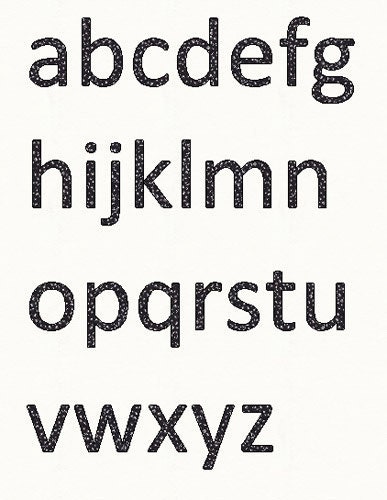



Polls and feedback will be considered as part of how Microsoft picks a winner, and the company is going to spend the next few months evaluating these new fonts and seeing which ones are proving popular. Microsoft is now releasing these five new fonts in Microsoft 365 so everyone can try them out before a new default is chosen. Based on the spirit of the German industrial standard, Grandview looks like it would work well in PowerPoint slides in particular. Much like the signs, this font is designed to be highly legible, with some tweaks to make it more comfortable for long-form reading. Created by Aaron Bell, it draws inspiration from classic German road and railway signage. Grandview is the most striking of all five new fonts. Grandview draws inspiration from classic German railway signage. I’ve been testing all the new fonts in Word, and this one in particular feels the most comfortable for reading long documents. The designers took inspiration from old armchairs to find a practical way to bring a classic, valued font back to life without the serifs. Seaford by Tobias Frere-Jones, Nina Stössinger, and Fred Shallcrass, feels the most immediately familiar out of the bunch, invoking the classic old-style serif text typefaces. Mattison named the font after a rocky mountain in Colorado that reminds him of the Swiss Alps. Helvetica is the most famous example of this type of “grotesque san serif” font, and Matteson has attempted to contrast Microsoft’s Arial font here, too. The stroke endings are very clearly cut off, but there’s some subtle softening to avoid the rigid grid-based typography you typically find with a font like this. Image: Microsoftīierstadt by Steve Matteson is inspired by mid-20th-century Swiss typography. It has big variations in the thick and thin parts of its letters, along with very distinct curves on letters like S, A, and J. Skeena, created by John Hudson and Paul Hanslow, feels inspired by various periods of font design. It almost looks like a more modern version of the default Times New Roman font from decades ago, with wide characters, accents, and clear punctuation. Tenorite, created by Erin McLaughlin and Wei Huang, is the more traditional style out of the five. Microsoft is starting to gather feedback on these five new fonts today, and it plans to set one as the new Office default font in 2022. The five new sans-serif fonts feature a variety of styles, including traditional, modern, and even one inspired by German road and railway signs. While there are more than 700 font options in Word, Microsoft has commissioned five new custom fonts for Office, in a move away from the Calibri font that has been the default in Microsoft Office for nearly 15 years. Here, we’ll go over some tips to help you choose the right font and size for your resume.Microsoft is changing its default Office font next year and wants everyone to help pick the new default. Even so, ensuring your resume is easy to read is a top priority. Often, creative interviewers view the resume as a showcase of creative skills and abilities and is expected to be representative of your work. If you’re creating a resume for a creative field like graphic design or advertising, you have more flexibility when it comes to style. These programs don’t always read and interpret intricate fonts well, so complicated or overly detailed font options can sometimes be turned into blank boxes or other illegible characters.
#CALIBRI FONT REVIEW SOFTWARE#
Many employers also use software called an applicant tracking system (ATS) to record and sort job applications. It may be tempting to choose a font that showcases your personality, but keep in mind that recruiters will be put-off if a font makes it harder for them to do their job of reading your resume. With thousands of fonts to choose from, it can be overwhelming to decide on the font that will leave the best impression on an employer and increase your chances of moving forward in the interview process. In Office 2007, it replaced Times New Roman as the default typeface in Word and replaced Arial as the default in PowerPoint, Excel, Outlook, and WordPad.De Groot described its subtly rounded.
#CALIBRI FONT REVIEW HOW TO#
How to choose the best resume font and size Calibri (/ k l i b r i /) is a sans-serif typeface family designed by Luc(as) de Groot in 20022004 and released to the general public in 2007, with Microsoft Office 2007 and Windows Vista.


 0 kommentar(er)
0 kommentar(er)
